Practice with our SBI PO Prelims reasoning questions 2019 day 19. The Exam pattern for SBI PO has been changing every year. Due to the dynamic changes in exam pattern, the questions become tougher compared to the previous year. So the questions are at a high level than the candidate’s calculation.
Depends upon the current situation our IBPS Guide is providing the updated SBI PO prelims reasoning questions 2019 day 19 for SBI PO 2019. Our Skilled experts were composing the questions under the new level of the examination and in aspirant’s exam point of view. So candidates gear up your preparation, practice daily with our SBI PO Prelims reasoning questions 2019 day 19 and implement your skill. With your attentive preparation, we wish you all getting success in your SBI PO 2019.
“Success usually comes to those who are too busy to be looking for it”
[WpProQuiz 5355]Click Here for SBI PO Pre 2019 High-Quality Mocks Exactly on SBI Standard
Directions (1-3): Study the following information carefully and answer the questions given below.
Ten people S, D, U, M, A, K, T, B, V and F are sitting in a two parallel row– Row1 and Row 2 facing each other. S, F, B, V and D are sitting in row 1 facing south and T, K, U, M and A are sitting in row 2 facing north but not necessarily in the same order.
U sits second from the extreme end. V sits immediate left of the one who faces U. One person sits between V and S. A sits second to the right of the one who faces S. The number of person sits left of M is one less than that of right of F. T does not sits opposite to F. D is not an immediate neighbor of F. K and T are not immediate neighbors.
1) Who among the following sits second to the left of K?
a) The one who sits opposite to V
b) The one who sits immediate right of U
c) The one who sits second to the left of T
d) Both (a) and (b)
e) None of these
2) What is the position of V with respect of F?
a) Second to the left
b) Third to the right
c) Immediate left
d)Immediate Right
e) Second to the right
3) How many person sits between the one who sits opposite to B and the one who sits opposite to S?
a) One
b) Two
c) Three
d)Cannot be determined
e) None
Directions (4-6): Study the following information carefully and answer the questions given below.
Eight person A, K, N , H, G, S, T and I were born on two different dates 15th and 25th of a four different month viz., March, April, May and June but not necessarily in the same order.
S was born on 25th of the month which does not have 31 days. Two people were born between S and A. Five persons were born between T and K. K was not born on March. Number of person born after I is as same as number of person born before G. N was born just after I. I and H were born in the same month.
4) Who among the following was born in May month?
a) H
b) A
c) I
d) T
e) Both (a) and (c)
5) How many people was born after I?
a) One
b) Two
c) Three
d) More than Three
e) None
6) Which of the following statement is correct?
a) A was born on May
b) N was born on 15thof May
c) S was born on Just after H
d) T was born on April
e) None of these
7) Study the following information carefully and answer the questions given below.
Eight people belong to same family with three different generations. K is the daughter of J.O is the daughter of M. O is the Niece of K. F is the mother-in-law of R. O is married to R. I is the grandfather of L. F has only one child. K is a married female.
How O is related to J?
a) Son
b) Daughter
c) Aunt
d) Granddaughter
e) None of these
8) Five persons, A, F, C, D and E are different in their heights. E is taller than at least two people. A is taller than D. F is shorter than C who is shorter than E. D is taller than E. Who among the following is the second tallest person?
a) A
b) F
c) E
d) D
e) Cannot be determined
Directions (9-10): Read both the conclusions and then decide which of the given conclusions logically follows from the given statements disregarding commonly known facts.
Give Answer:
a) If Only conclusion I follows.
b) If Only conclusion II follows.
c) If either conclusion I or II follows.
d) If Neither conclusion I nor II follows.
e) If both conclusions I and II follow.
9) Statements:
No Book is Pencil
All Pencil is Pens
No Pens is Blue
Conclusions:
No Blue is a Pencil
All Books being Pens is a possibility
a) a
b) b
c) c
d)d
e) e
10) Statements:
All Princess are King
All Braves are Princess
No Queen is a King
Conclusions:
All Princess can never be a Queen
All those Princess who are Kings are Queens
a) a
b) b
c) c
d)d
e) e
Answers:
Direction (1-3):

- U sits second from the extreme end.

- V sits immediate left of the one who faces U.

- One person sits between V and S.
- A sits second to the right of the one who faces S. Here we cannot fix the position of S in extreme left end in Case 1. Because if we can fix s then we cannot fix the position of A. So S sits at extreme right end in case1.

- The number of person sits left of M is one less than that of right of F.

K and T are not immediate neighbours. Form this statement we cannot fix the position of K and T in Case1a, 2a and 2b. So these cases are eliminated.
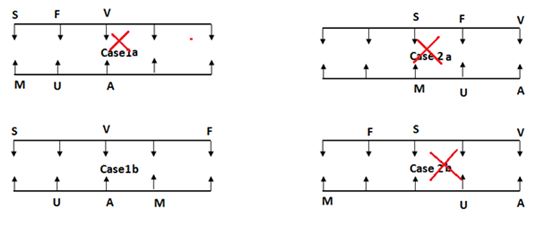
- T does not sit opposite to F.
- D is not an immediate neighbour of F. Hence case1b is the final arrangement

1)Answer: d)
2) Answer: e)
3) Answer: b)
Direction (4-6):
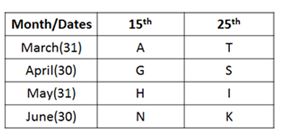
- S was born on 25th of the month which does not have 31 days.
- Two people were born between S and A.

- Five persons were born between T and K.
- K was not born on March.
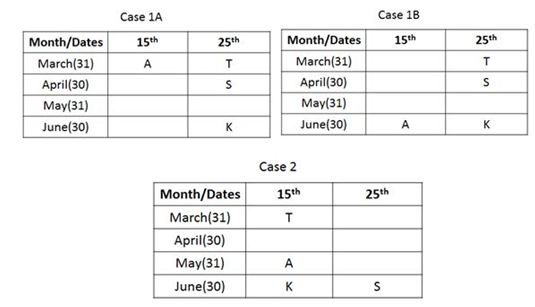
- Number of person born after I is as same as number of person born before G.
- N was born just after I.
- I and H were born in the same month.
From these statements we cannot fix the position of I, N and G in case 1b and case 2. So these cases are eliminated. And the final arrangement is
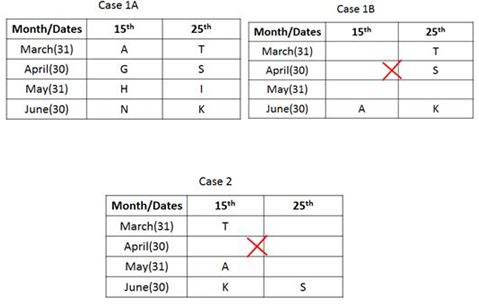
4) Answer: e)
5) Answer: b)
6) Answer: e)
7) Answer: d)
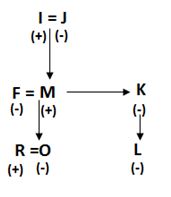
8) Answer: d)
- E is taller than at least two people.
- A is taller than D.
- F is shorter than C who is shorter than E.
- D is taller than E.
- From these all the statement we have,
A > D > E > C > F.
9) Answer: e)

10) Answer: a)
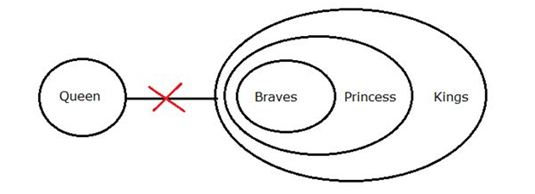
So, only conclusion I follow.





